Polycentric urban development refers to different forces causing multiple previously close-by but independent urban sub-divisions to become a larger and more integrated urban system. Polycentricity is oftentimes deemed a desirable urban form, generating greater agglomeration externalities as well as facilitating the achievement of social, economic, and environmental goals. Polycentric urban development has been observed and analyzed at various geographical scales, including the intra-urban (e.g., Central Business Districts (CBDs), edge cities, and satellite towns within a city), and inter-urban (e.g., the ‘Pearl River Delta’ mega-city region) scales.
Despite much insightful work on polycentric urban development in China, there is a lack of systematic comparison at either scale. Therefore, in this project, we identified polycentric urban structure and quantified the degree of polycentricity in China at both intra-urban scale (i.e., 318 Chinese cities) and inter-urban scale (i.e., 22 City-Regions) using detailed gridded population data, U.S. Oak Ridge National Laboratory (ORNL)’s LandScan dataset.
Intra-urban Polycentricity
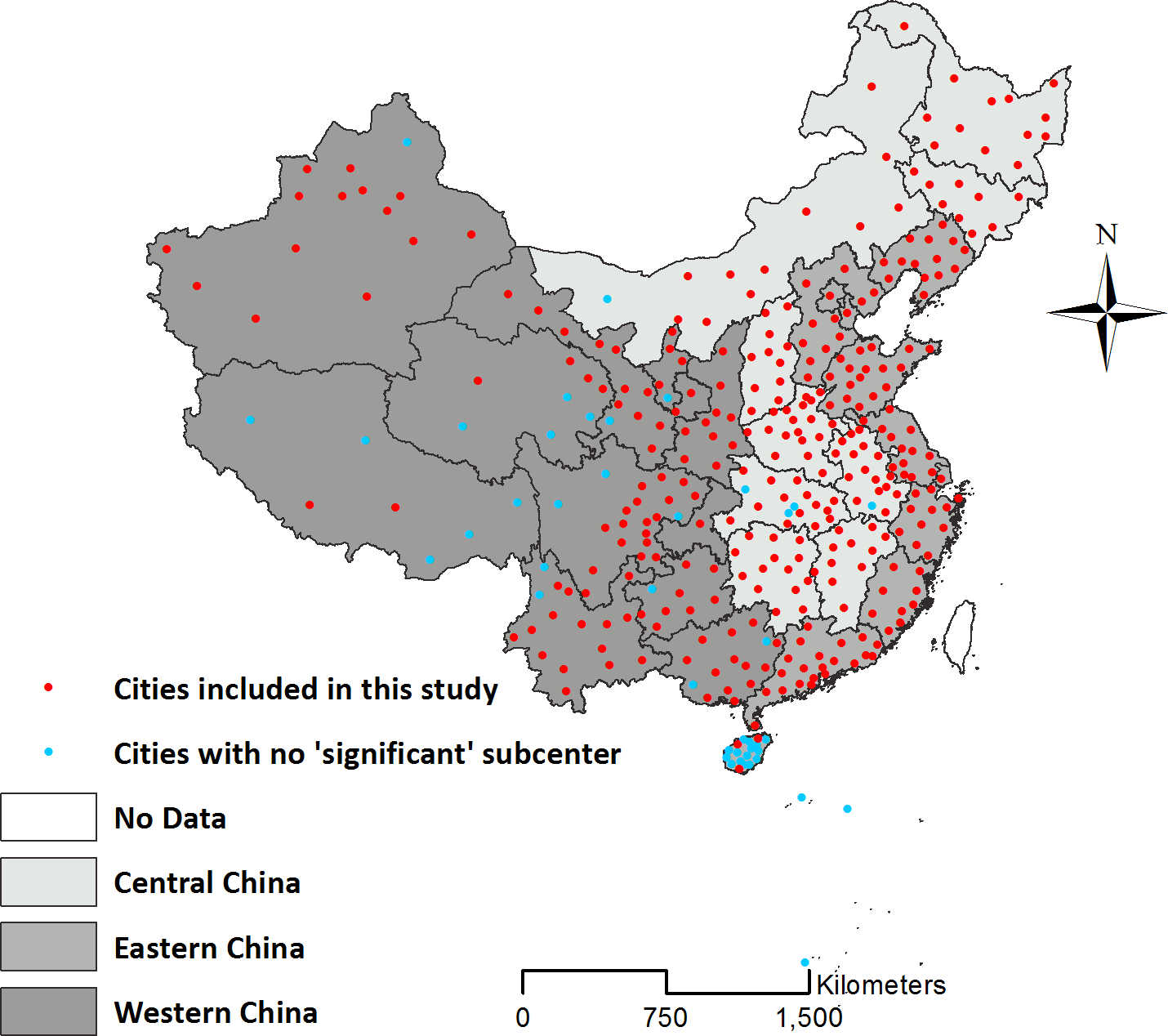 Chinese cities at prefecture level and above.
Chinese cities at prefecture level and above.
Over 90% of cities have four or fewer intra-urban (sub)centers.
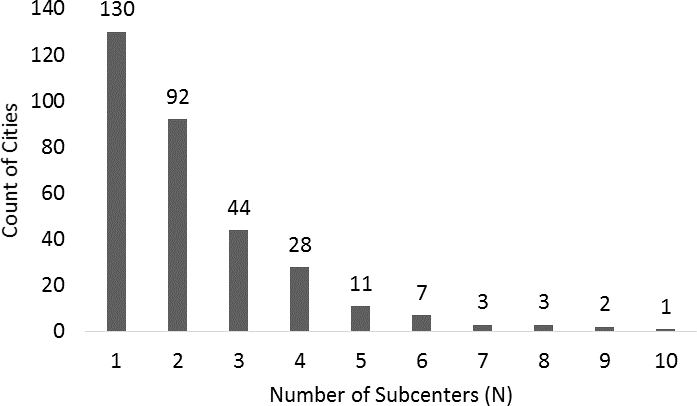
Higher degree of polycentricity is found in mountainous cities.
Polycentricity is positively associated with GDP per capita in Eastern China.
Identified patterns of centers in a number of cities are largely consistent with corresponding master plans, for example, Shanghai and Beijing.
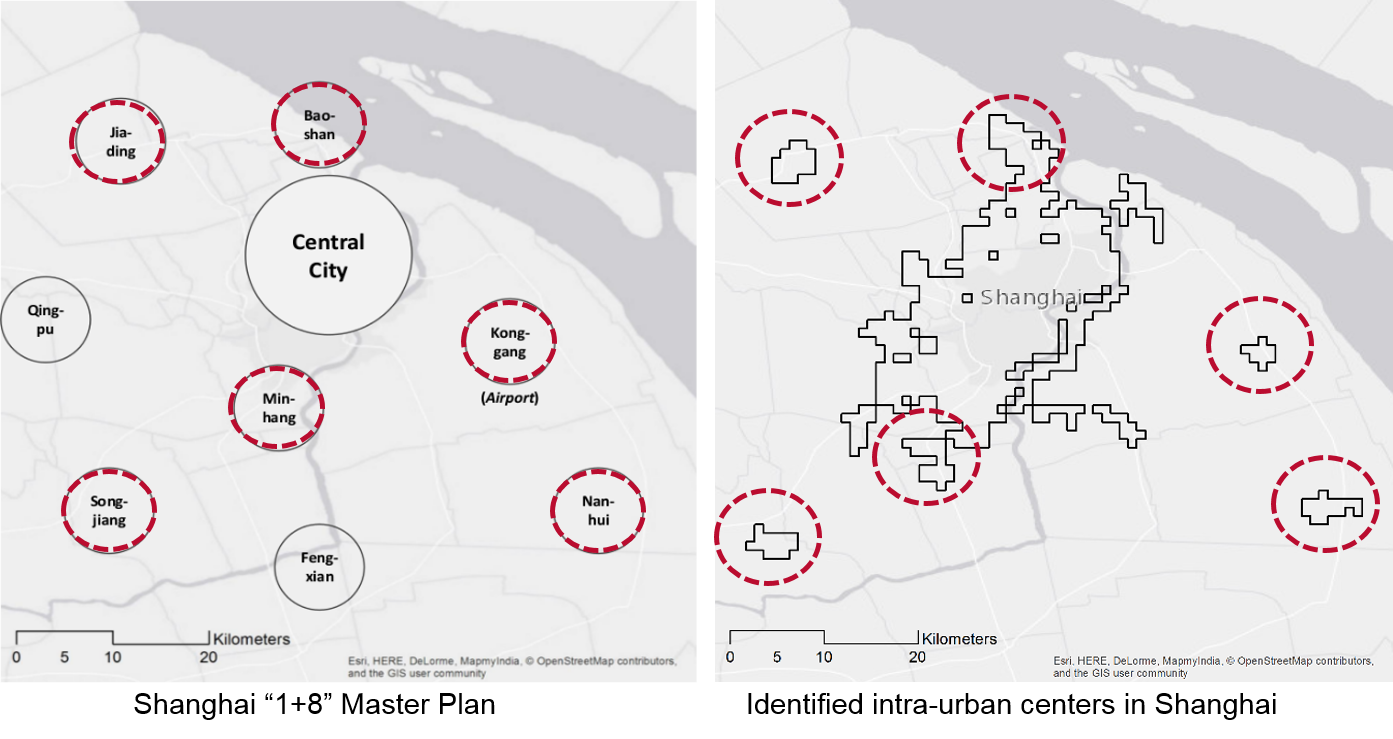
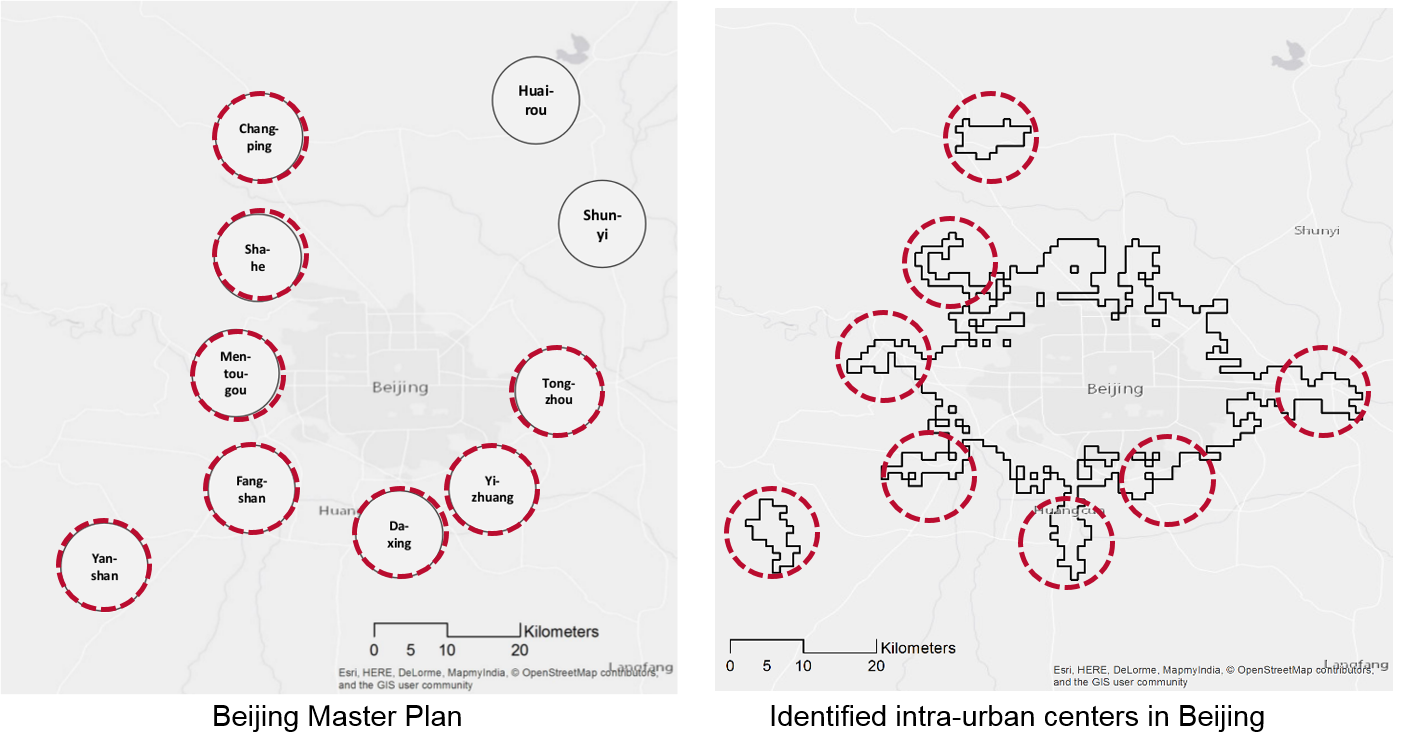
Inter-urban Polycentricity: Polycentric Urban Regions (PURs)
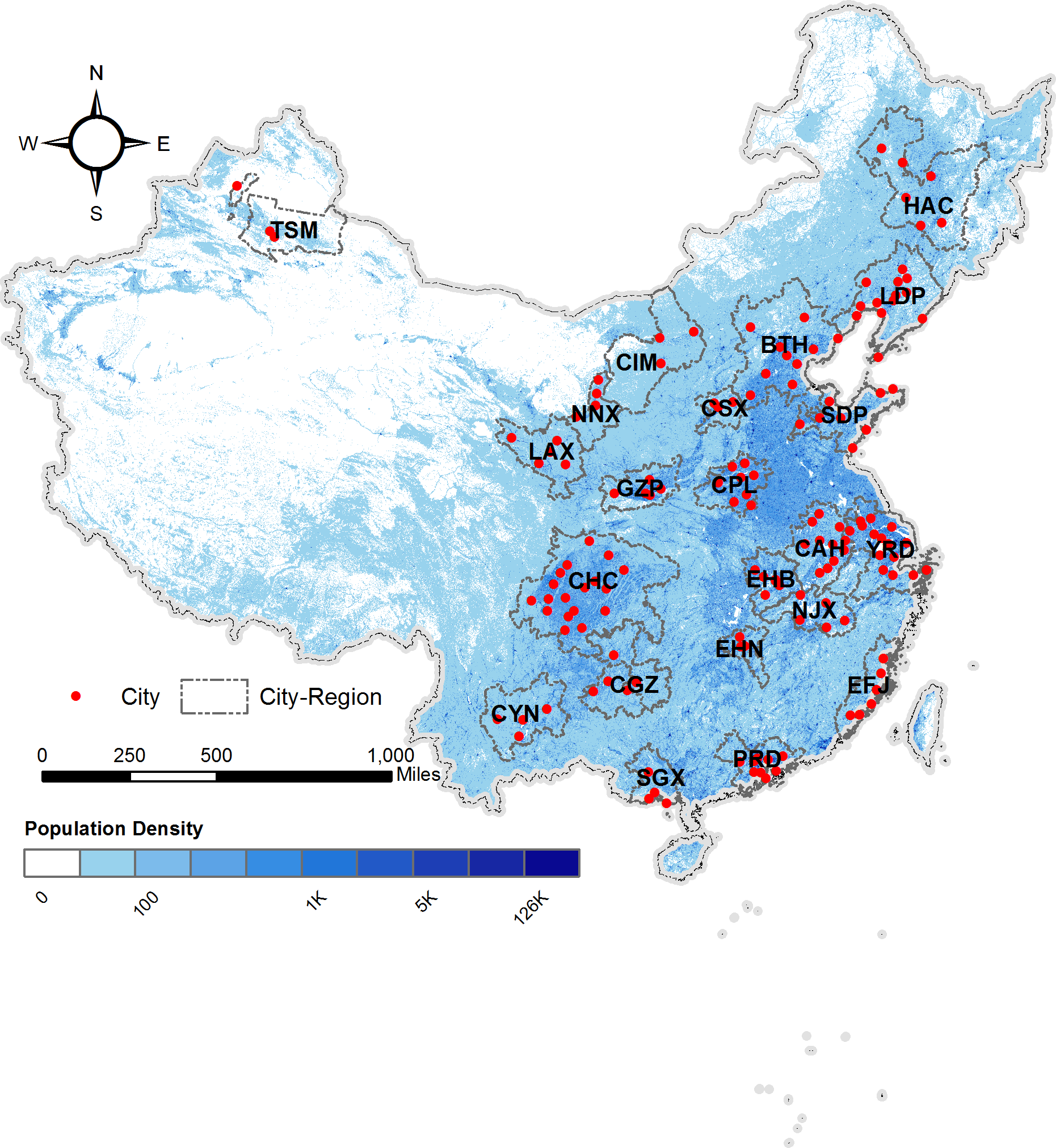
| PUR | Full Name | Major Cities | Area* |
|---|---|---|---|
| BTH | Beijing-Tianjin-Hebei | Beijing, Tianjin | 18.27 |
| CSX | Central Shanxi | Taiyuan | 2.79 |
| CIM | Central Inner Mongolia | Hohhot | 13.19 |
| LDP | Liaodong Peninsula | Shenyang, Dalian | 12.76 |
| HAC | Harbin-Changchun | Harbin, Changchun | 18.53 |
| YRD | Yangtze River Delta | Shanghai, Nanjing, Hangzhou | 10.05 |
| CAH | Central Anhui | Hefei | 8.63 |
| EFJ | Eastern Fujian | Fuzhou, Xiamen (Amoy) | 5.5 |
| NJX | Northern Jiangxi | Nanchang | 5.78 |
| SDP | Shandong Peninsula | Jinan, Qingdao (Tsingtao) | 7.39 |
| CPL | Central Plain | Zhengzhou | 5.68 |
| EHB | Eastern Hubei | Wuhan | 5.09 |
| EHN | Eastern Hunan | Changsha | 2.81 |
| PRD | Pearl River Delta | Guangzhou, Shenzhen | 5.47 |
| SGX | Southern Guangxi | Nanning | 4.26 |
| CHC | Chengdu-Chongqing | Chengdu, Chongqing | 26.65 |
| CGZ | Central Guizhou | Guiyang | 10.46 |
| CYN | Central Yunnan | Kunming | 9.45 |
| GZP | Guanzhong Plain | Xi’an | 5.54 |
| LAX | Lanzhou-Xining | Lanzhou, Xining | 6.85 |
| NNX | Northern Ningxia | Yinchuan | 4.07 |
| TSM | Tianshan Mountains | Urumqi | 9.56 |
Area is in 10,000 sq. km
A typology of Chinese PURs is presented based on the average intra-urban polycentricity and inter-urban polycentricity, where there is only limited levels of association between inter-urban and inter-urban polycentricity.
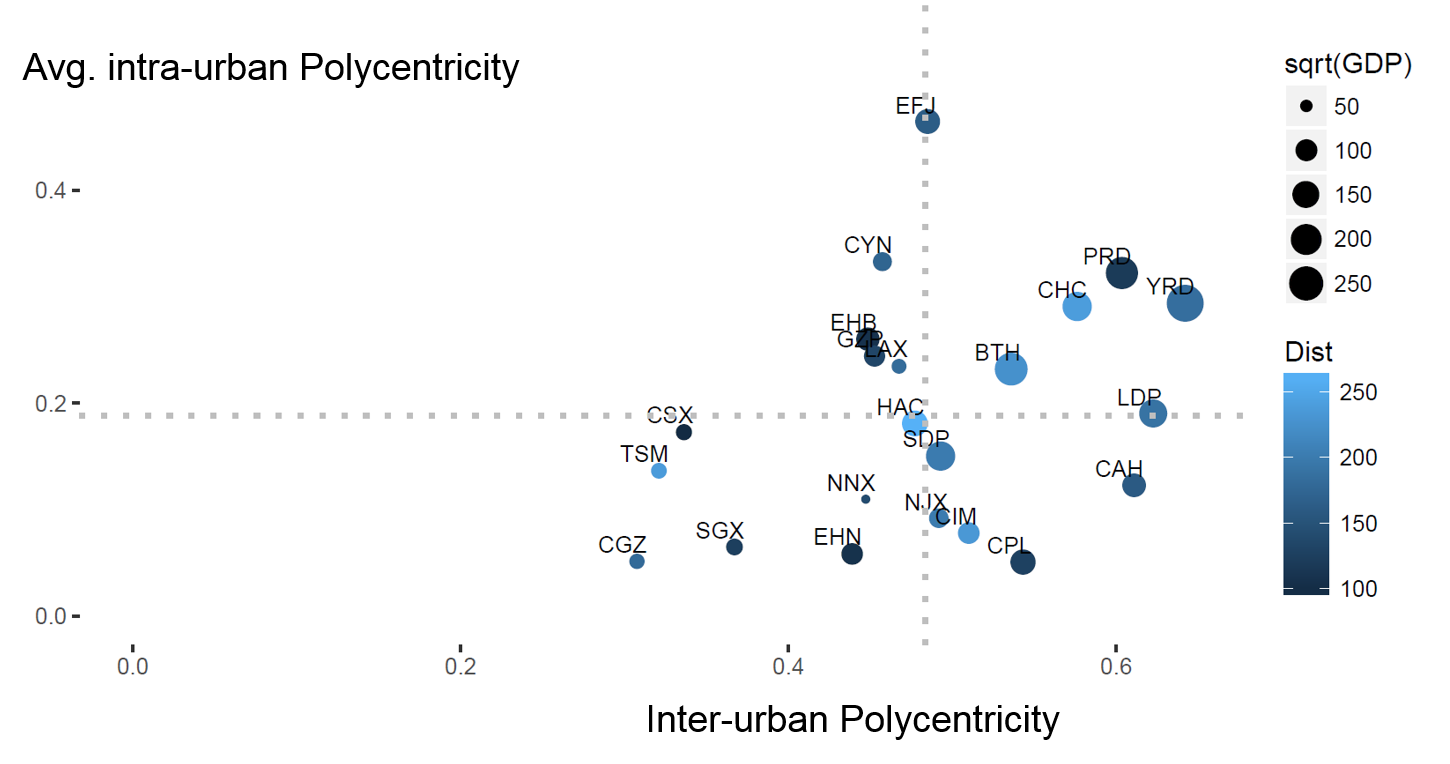
The Yangtze River Delta (see below) and Pearl River Delta have high levels of both intra-urban and inter-urban polycentricity.
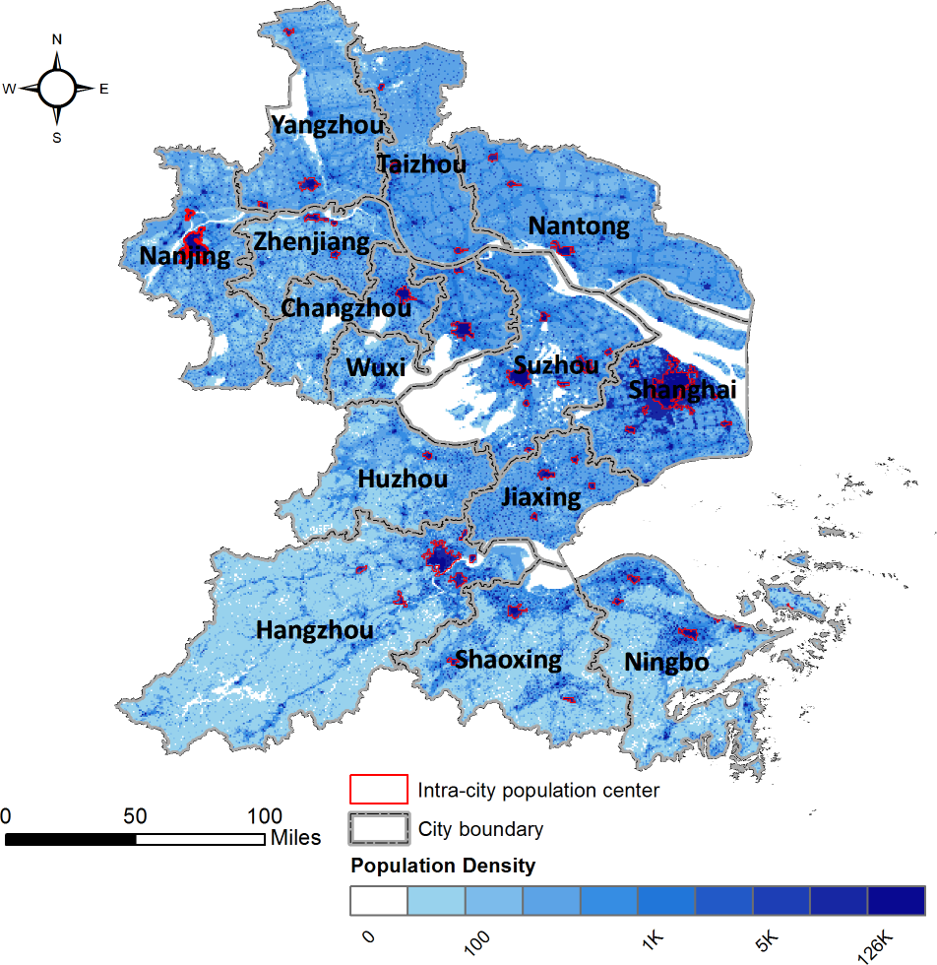
Most PURs in Central and Western China are characterized by a primate urban system and low levels of inter-urban polycentricity, for example, the Central Guizhou (CGZ) PUR:
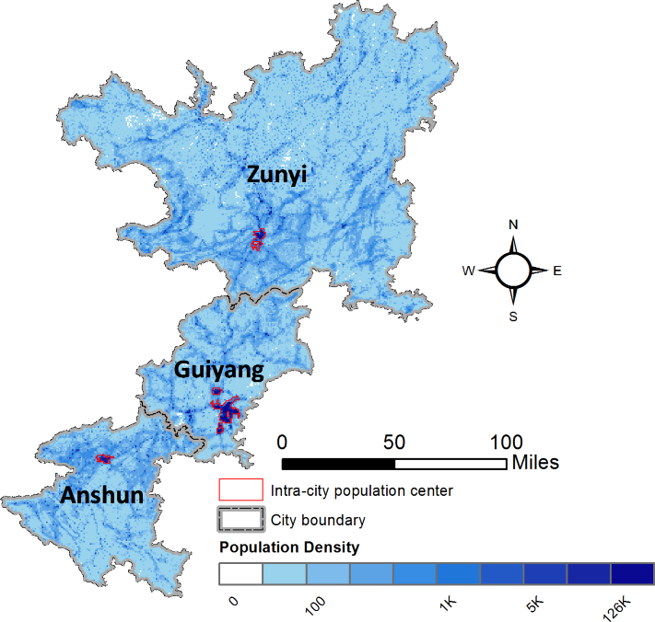
References
- Xingjian Liu, Mingshu Wang. (2016).How polycentric is urban China and why? A case study of 318 cities. Landscape and Urban Planning, 151, 10-20 (equal contribution).
- Xingjian Liu, Ben Derudder, Mingshu Wang. (2018). Polycentric urban development in China: A multi-scale analysis. Environment and Planning B: Urban Analytics and City Science, 45(5), 953-972. DOI.